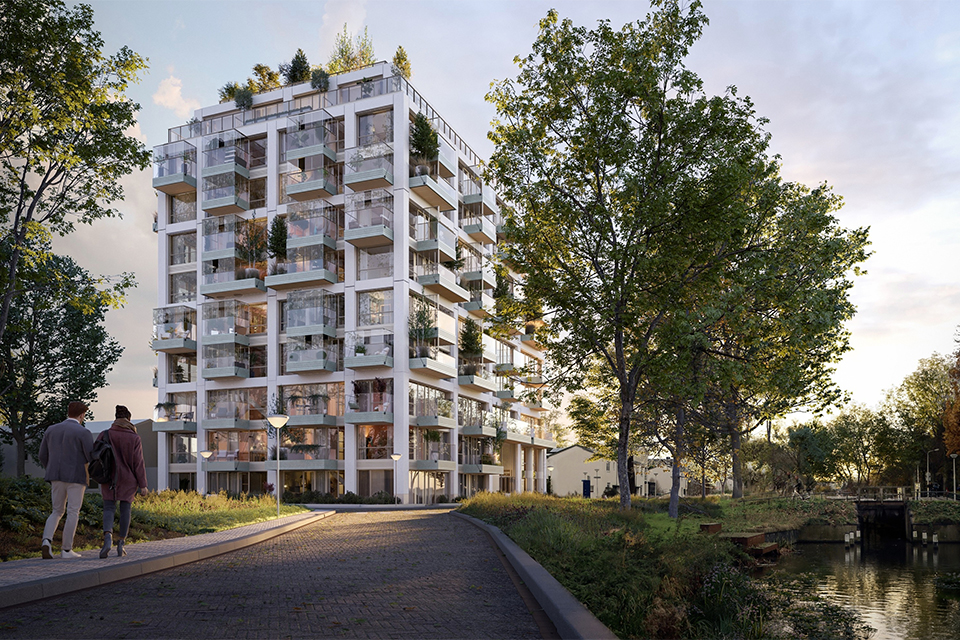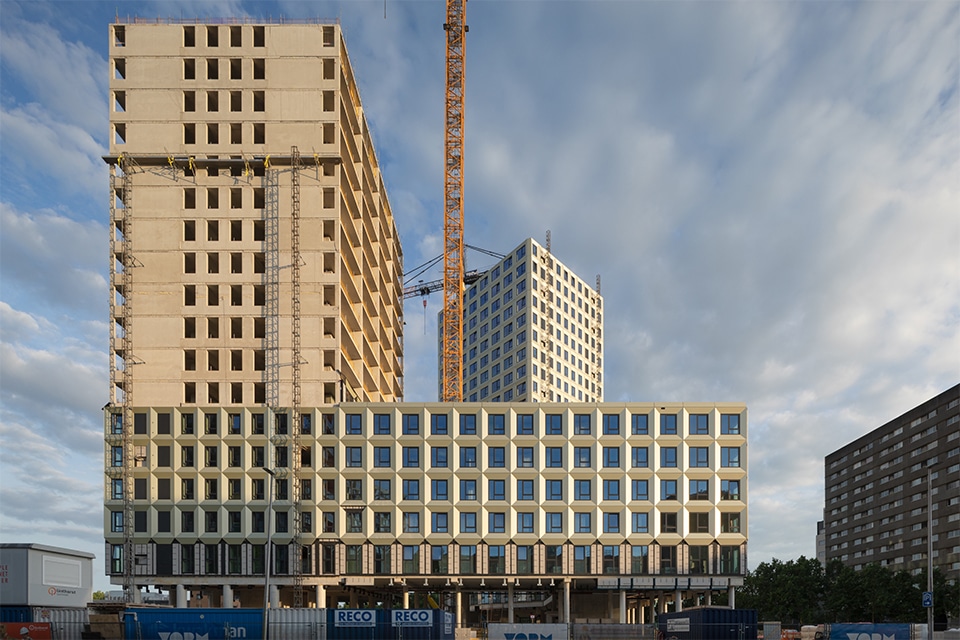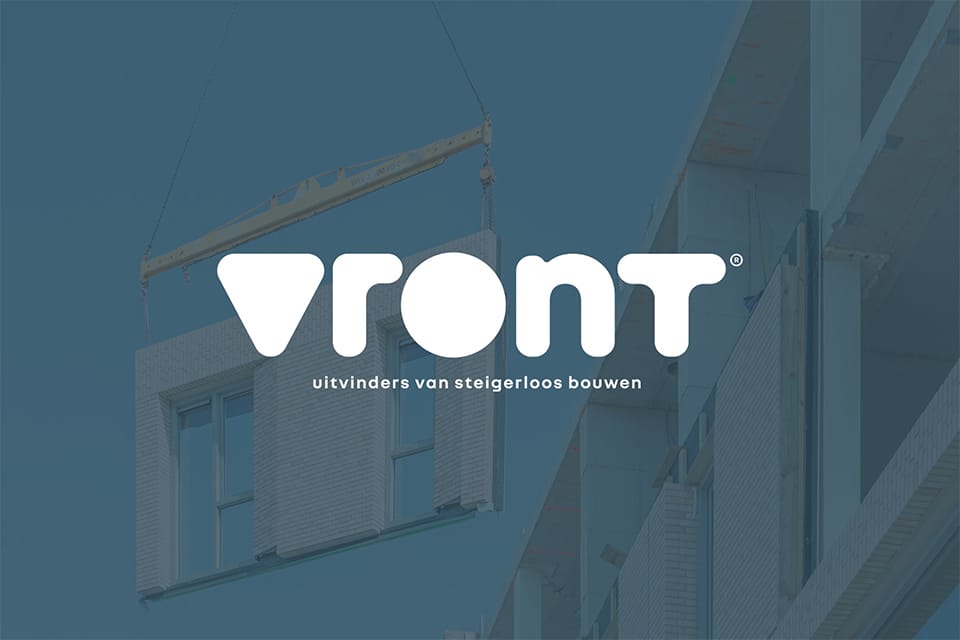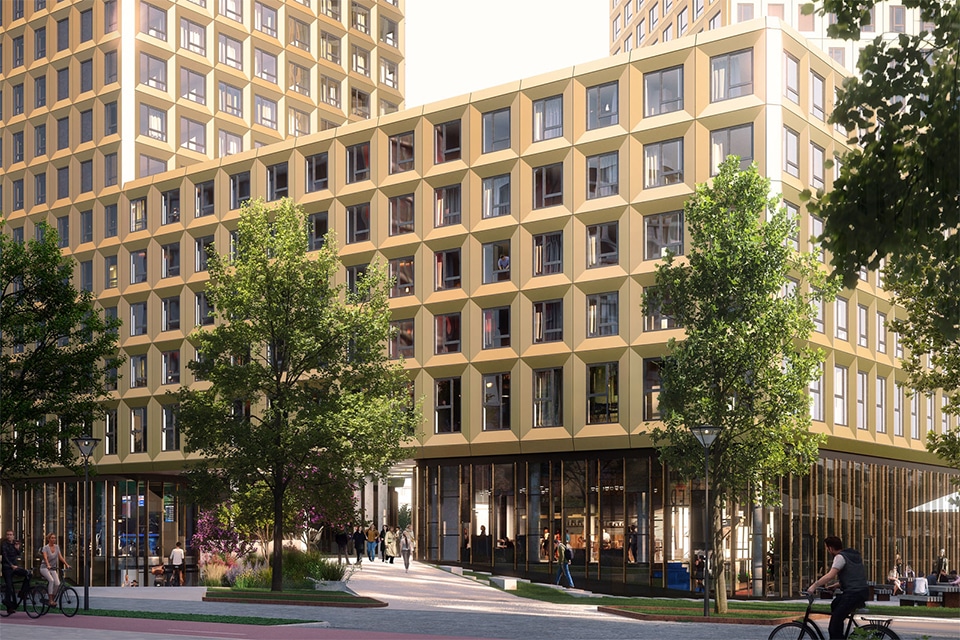
Large windows begged for outdoor blinds in modern villa
A recent, ultramodern newly built villa in the green area between Mechelen and Leuven, sleek white plasterwork and large windows: everything to live carefree and comfortable. That's also what the owners thought when they moved in 7 years ago. Unfortunately, they soon had to find the right intervention to keep it pleasantly cool inside on hot days. Although they enjoy plenty of daylight inside, the large windows facing south unfortunately also catch the sun and the heat that comes with it.
"Especially on the upper floor, it soon became too hot as soon as the sun came peeping in. I equipped a room there as a space for the sports classes I teach and there, with the large window, it was difficult to block out the sun anyway," the lady of the house tells her story. "In no time at all, even the low morning sun made this room too warm to exercise in a pleasant way, and that scared me. But the same large window in the stairwell also caused indoor temperatures to be too high." Even in the spring, the problem was at least as bad as in the summer. "Only difference is that then you can open a window to cool it down a little inside."
"Even the low morning sun made it too hot inside in no time."
And so the owners started looking for the right solution to bring the indoor temperatures down. They thought about fabric awnings when the house was built, but in the end they were advised against them for fear of poor wind resistance in large areas. They were told that the solar control glass would keep out the sun sufficiently. That soon turned out not to be the case, so they had to look for other interventions: an interior curtain with reflective layer (didn't offer a solution because the heat was already inside at that moment), solar protection film on the glass (but that doesn't let any heat in in winter, although it is welcome then), a terrace roof with slatted roof in front of the large kitchen window (took away too much light), ... the various possibilities passed in review, but none of them could really convince them. "And so last year we finally came back to cloth awnings," they say.
"Solar control glass, interior curtains, solar control film ... nothing outweighed the benefits of screens, as long as they didn't detract from the minimal windows."
A new step in design and ease of installation
"The only problem," recalls installer Luc Boonen when asked what the owners had come to him with, "were the narrow window profiles of the minimal windows, which define the sleek look and feel of this house. With the existing fabric awnings on the market, the side guides would come out in front of the glass anyway, and that would have been a real waste for this house. These owners were very conscious of the aesthetic aspect of their home when choosing blinds. That's why they didn't want just any kind of screen, but instead looked for solutions that could maintain the appearance of their facade. Fortunately, Renson had just launched a new generation of windproof fabric awnings: Fixscreen Minimal, with slimmer side guides and more subtle fabric boxes for large windows like this one. As if fate had its way with it."
"The fact that the lateral guides of the screens would be the same width as the window profiles indeed helped us win over," the residents look back on this successful intervention. "In addition, the transition between the two large windows on the ground floor and the second floor was nicely worked out with an insulated aluminum profile in the same color and in the same plane of the lower screen. As a result, it is barely noticeable."
"With side guides as wide as the window profiles and the fabric boxes subtly recessed, the retrofitted screens are barely noticeable."
Luc Boonen: "With barely 2 cm of visible window profile, the classic Fixscreens (with side guides 3.5 cm wide) would not have been an option in this case. So the 'Fixscreen Minimal' came at just the right time here, because at least with it no aluminum is visible in front of the glass after installing the side guides. With the fabric box and side guides finished in the same color of textured paint, thanks to the screwless guides and a smaller bottom bar, the pre-assembled fabric awning barely even stands out. So for post-installation on sleek homes with "minimal windows," this is the gap in the market, with minimal impact on the home and architecture. Especially for large windows, since you can still cover those larger areas with a smaller fabric box." Another advantage: the depth of the side guides and fabric box is such that a fly window can be mounted between them afterwards. In contrast to the previous generation of Fixscreens, you thus have insect protection even with the screens raised.
"Not only in terms of look&feel, but also in terms of installation, the new Fixscreen represents a big step forward," Luc Boonen adds. "It allows us to attach the fabric box perfectly separately before mounting the guides in place. The fact that you can also (dis)assemble the new bottom rail on site from now on makes a big difference in the weight of large fabrics."
The result? Always pleasant indoor temperatures
Since this spring, thanks to their choice of cloth awnings, the owners have also noticed a real difference in their homes. Upstairs it has not yet become too hot. "On the contrary: in the spring I even had to raise the screens at times because it got too chilly and I wanted the sun inside to help warm it up. That's the advantage of screens, you can operate them perfectly as you wish," they say. "As soon as the sun shines on the window now, I lower the fabric awning. And that keeps the house comfortable even on hot summer days. Last summer, at one point I recorded 26 degrees inside with an outside temperature of 33 degrees. My clients who come to exercise are already very pleasantly surprised. Not to mention the great advantage that, thanks to the transparency, you always maintain the view outside."
"We really notice a difference in our home: now we keep it nice and cool inside on hot days without any problems."






